Dates for your Diary
Friday 17th Nov 10.30am AGM
Saturday 2nd Dec 10am - 5pm Winterfest
What’s on at the Met
11th Nov 2pm Abertillery Town Band £8
18th Nov 2pm & 7pm Back to the 80s (music) £10
23rd Nov 1pm The Missing of Mametz (play) £6
30th Nov to 2nd Dec 2.30pm & 7pm Nativity The Musical £12
For more information visit or Tel 01495 533195
Museum Opening Times
The Museum is open to the public, free of charge:
Thursday* to Saturday 10am – 1pm
Winterfest Sat 2nd Dec 10am – 5pm
Any donations of tins, bottles, chocolate bars, toiletries, bric-a-brac, toys, handicrafts, raffle prizes and items for our Christmas hamper, would be very gratefully received! In fact we are happy to receive most things except for books, DVDs and CDs. Please bring to the museum at your earliest convenience.
October 100 Club
This month’s prize numbers were drawn by two visiting ‘face painters’ and the lucky winners are:-
No. 4 Denis Osland £20
No. 49 Greg York £10
If you would like to join our 100 club and be in with a chance of winning, it costs just £1 a month. Ask at the museum for further details.
Remembrance Day
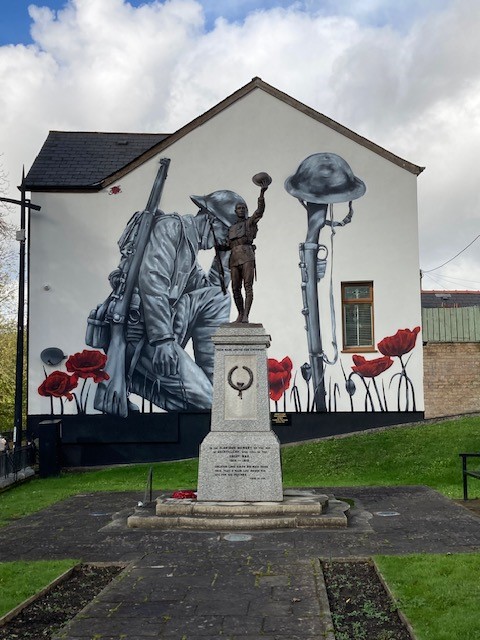
The service this Remembrance Sunday will be the first with the fully completed eye-catching mural. The mural was the idea of local businessman Bob Smith who approached the owners of the house behind the war memorial. They were happy for the mural to go ahead and funds were raised to make the project a reality. A man who calls himself ‘Tee2sugars’ was commissioned to paint the mural and it took him just five days using a can of spray paint. I am given to understand that originally the mural featured an American Carbine rifle instead of the British Lee-Enfield 303 rifle. This has now been corrected.
The Inner Wheel Club
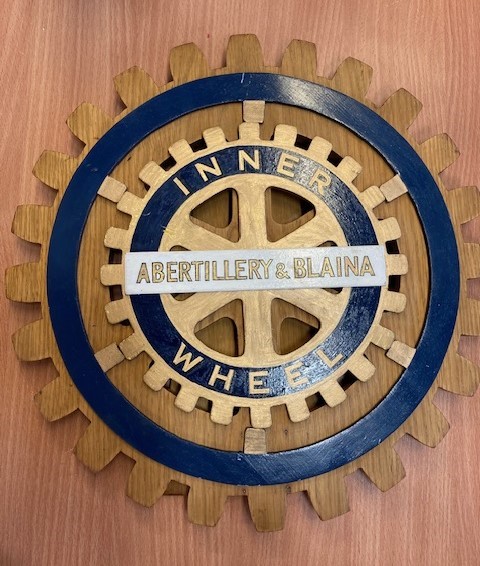 The museum has recently acquired some artefacts from the Abertillery & Blaina branch of the ‘Inner Wheel Club’ which has sadly now shut down due to falling membership. Some of these newly acquired artefacts will shortly be going on display in our ‘New Acquisitions’ display cabinet.
The museum has recently acquired some artefacts from the Abertillery & Blaina branch of the ‘Inner Wheel Club’ which has sadly now shut down due to falling membership. Some of these newly acquired artefacts will shortly be going on display in our ‘New Acquisitions’ display cabinet.
Pictured below are four members of the Abertillery branch and are (from left to right: Mrs Sian Jones, Mrs Irene Hucker, Mrs Angela Jones and Mrs Val Rosser. But just what was The Inner Wheel and how did it all start…?
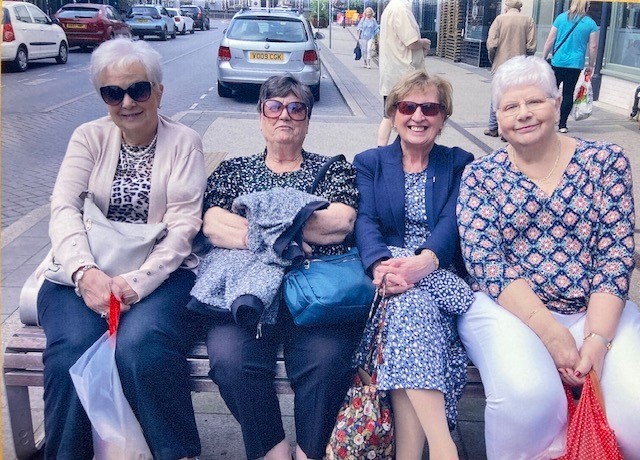
The Rotary Club, founded in 1905, was basically a men’s club. Their mission ‘to provide service to others, promote integrity, and advance world understanding, goodwill, and peace through our fellowship of business, professional and community leaders’ was largely achieved through raising money to support a wide variety of charities and it still exists to this day.
In November 1923, not wanting to be left out, the wife of a Manchester Rotarian Margarette Goulding, came up with the idea of forming a ladies branch. The first official meeting was on 10th January 1924 and was attended by 27 wives and daughters of Rotarians. They called their new female club ‘The Inner Wheel’.
By 1934 other groups had formed Inner Wheel Clubs and so the Association of Inner Wheel Clubs of Great Britain and Ireland was formed. Then, by 1967 the organisation had spread beyond these shores and so was born the International Inner Wheel whose ethos was to:
- Promote true friendship
- Encourage the ideals of personal service
- Foster international understanding
In 1969, Helena Foster, the then President, proposed that 10th January should be known henceforth as ‘International Inner Wheel Day’ in honour of the original Manchester founders but it wasn’t until 2012 that the decision was taken to open up membership to all women aged 18 or over meaning you no longer had to be related to a Rotarian to join.
The Abertillery branch of the Rotary Club was formed in 1938 and is still going to this day while the Abertillery & Blaina Ladies ‘Inner Wheel’ formed two years later in 1940.

The branch declined in the 1980s and closed but re-started in 1995 only to close again in 2023 due to the rising age of their members and a lack of new, younger members. However they still plan to have a stall this December for Winterfest (which will most likely be in their usual haunt of Ebenezer Chapel) so please give them your support on 2nd December.
For more information on The Inner Wheel Club, use this link
Sally Murphy
Speed Limits – 20 mph!!
With all this in the News lately about the change of speed limits in built up areas of Wales I started to wonder where the speed limits came from – they have always been around for my driving experience and when I passed my test one of the things my father told me!! You are going o get caught for speeding one of the days, my girl!! To date, he has been wrong. But I will admit – it is more luck than judgement!
Speed limits on roads was first introduced in 1865 when mechanical (steam) powered vehicles took to the roads at no more than 2mph in a populated area and 4mph everywhere else. N In 1896 this was increased to 14 mph and celebrated with the first London to Brighton race. Again in 1903 it was increased to20mph with the Motor Car Act of 1903. It seems it as widely ignored and then abolished in 1930 but by 1936 with the Road Traffic Act when it was deemed that at 30mph in built up area (with street lamps 200 yards apart) was a safe speed. When motorways came along initially there was no speed limit on them until 1965 when a trial of 70mph was imposed and then made permanent in 1967. In 1973 there was a world oil crisis so motorway speed limits were lowered to 50mph until 1974 when 70mph was reintroduced. This has stayed in place to the present day with 70mph on motorways and rural dual carriageways, plus 60mph on rural single carriageways and 30mph on built-up areas while certain slow-moving vehicles, such as tractors, are banned from motorways.
Now Wales is the only country in Britain to have the new change of speed in built-up areas of 20mph! So what about other countries? Germany has no limit but 130km/h considered the advised limit, whereas UAE has 2 roads where you can travel at 160km/h (100mph)! Poland is thought to be fastest in Europe at 88mph but the police are quite lax with speeding over there. Norway is the strictest with €711 fine for speeding, €5783 for drunk driving and €756 for jumping a red light!
While there is no minimum speed on roads you are not allowed to trundle along at 10mph as this is considered dangerous and police will stop you for a chat!
Drive carefully and if you’re on a push bike – no overtaking the cars!
Karen Pratley
Buckle Up! 40 Years of Seat Belts
 It isn't that clear when seat belts were first used but certainly one of the first designs made its appearance in the mid 19th century – in a glider. Fast forward to the early 1950s and the retractable seat belt so familiar to us today emerged but wasn't yet widely used. In 1968 UK law required that seat belts be fitted in cars but the legislation only covered the front seats and it was not until 1983 that it became law to actually wear them. A survey taken shortly afterwards showed that 90% of people were wearing seat belts and by the end of the year there had been a 30% drop in serious injuries from car accidents. Three years later in 1986 it became law also to fit seat belts in the rear. In 1989 it was a requirement for children travelling in the back seat to wear a seat belt and in 1991 it was a legal requirement for everyone use them. Now we take seat belts for granted and I, for one, would feel very uncomfortable if I had to travel in a car without one.
It isn't that clear when seat belts were first used but certainly one of the first designs made its appearance in the mid 19th century – in a glider. Fast forward to the early 1950s and the retractable seat belt so familiar to us today emerged but wasn't yet widely used. In 1968 UK law required that seat belts be fitted in cars but the legislation only covered the front seats and it was not until 1983 that it became law to actually wear them. A survey taken shortly afterwards showed that 90% of people were wearing seat belts and by the end of the year there had been a 30% drop in serious injuries from car accidents. Three years later in 1986 it became law also to fit seat belts in the rear. In 1989 it was a requirement for children travelling in the back seat to wear a seat belt and in 1991 it was a legal requirement for everyone use them. Now we take seat belts for granted and I, for one, would feel very uncomfortable if I had to travel in a car without one.
There are some exemptions, notably taxi drivers, delivery drivers only going 50m between deliveries, while reversing, the emergency services and if you have a medical exemption. There are also exemptions for some cars such as classic cars. Ignoring the rules could prove costly with the driver facing a £100 on the spot fixed penalty notice. And if you have passengers under 14 not wearing a seat belt, that's an extra £100 for each child. Once you are over 14 you are considered responsible for your own decision on whether or not to wear a seat belt but if you are caught not wearing one then you will be fined £100 as well as the driver. Best not take the chance for safety as well as monetary reasons.
Those of us who have travelled by plane know that you have to wear a seat belt on take-off and landing and are urged to keep your seat belt on as much as possible. The crew piloting the plane have to wear restraints that include shoulder straps. Passenger seats are fitted only with a lap belt. Why? Well according to the internet it comes down to cost as the weight of the attachments needed for cross body restraints would add significantly to airline fuel costs.
Forty years is a long time for seat belt design not to have noticeably changed. That suggests it's a pretty good design. Be sure to wear yours, it might just save your life!
Jen Price
Coal Trucks
I cycled from my home in Abertillery the short distance to this location right beside Rose Heyworth colliery in the chance there was a train in the colliery sidings. I was in luck and I was able to take these photos. The year was 1963.
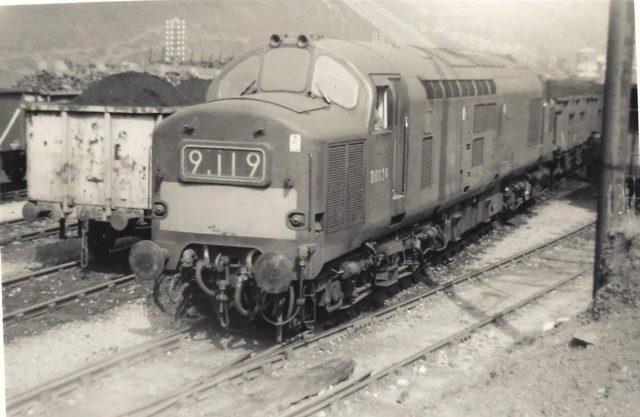
To access the trackside, I walked down a short path from Rose Heyworth Road to this location. The path ran between the end of Abertillery Grammar School playing fields and the southern boundary of Rose Heyworth colliery. I knew that path was there as once a week, the pupils in Abertillery Grammar School would walk from our school to the playing fields. I was one of those pupils and I had to play sports there although I wasn’t much good. Rose Heyworth colliery was in full swing back then and provided coal for many industries throughout south Wales (and maybe beyond that too).
When I was attending Abertillery Grammar School our school yard directly overlooked the line between Abertillery and Brynmawr and by far the most trains I saw passing the school were coal trains; the empties went north towards Rose Heyworth and the loaded coal trains went south, past our school yard and onwards down the valley.
The coal trucks were unbraked and the first trucks behind the loco had their brakes partly activated as the engine alone could not stop the train on the steep downward gradients. At least the 2-8-0 T headed coal trains did but I am not sure if this practice continued when they were replaced by the class 37s. In these photos you can see a D6824 in the colliery sidings already waiting to leave the sidings and join the main line. I’m not sure how the driver knew when it was safe to leave as I can’t see any signal at the end of the sidings though, if I am correct about the date I took these photos, passenger services had ceased by then and there were very few trains going south past the colliery, so maybe it was always safe to leave. Perhaps someone knows?
The trucks behind the D6824 in the first photo appear to be loaded with small coal but trucks a siding or two away are loaded with lump coal. Look closely at the second photo below and you will notice a foot crossing over the tracks. When I was living in Abertillery, I never knew that crossing existed.
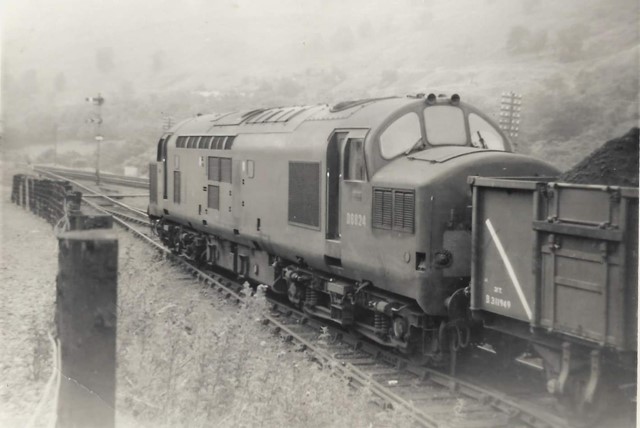
One last thing, in the first photo and in the background, you can just see some of the colliery buildings (though not very clearly).
Lyndon Leach
The Editor wishes to thank Lyndon Leach for this interesting contribution.
Photocopying
For all your photocopying needs, visit Abertillery Museum; charges below:
|
A4 |
A3 |
Black & white |
15p |
20p |
Colour |
60p |
£1 |
Top Of Page
© Abertillery & District Museum 2023 
